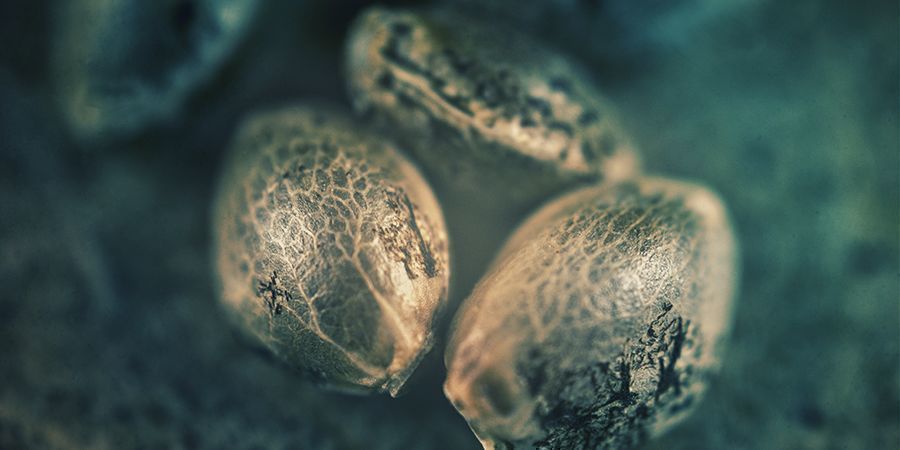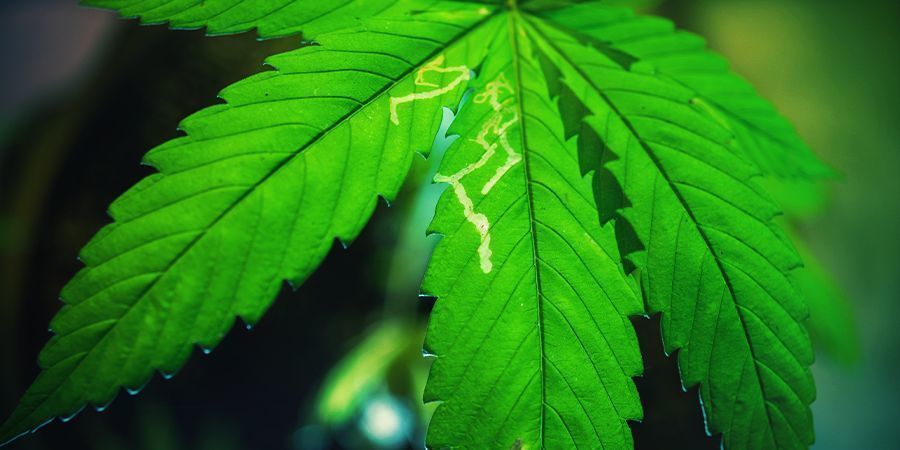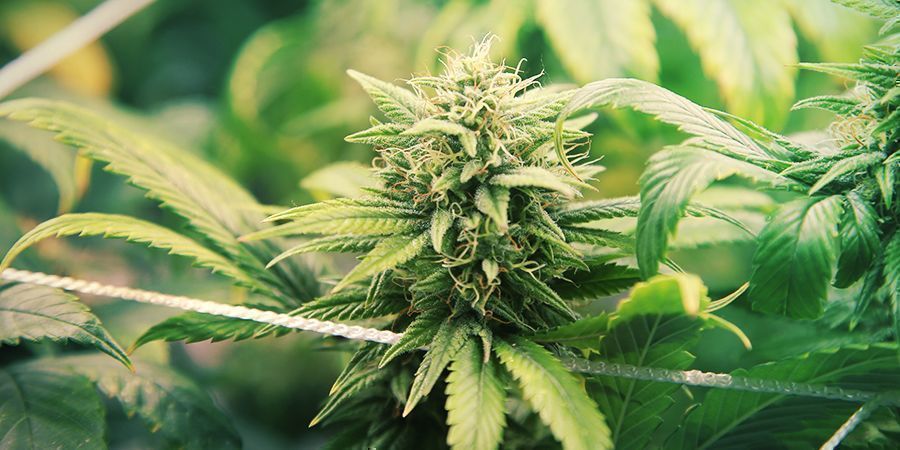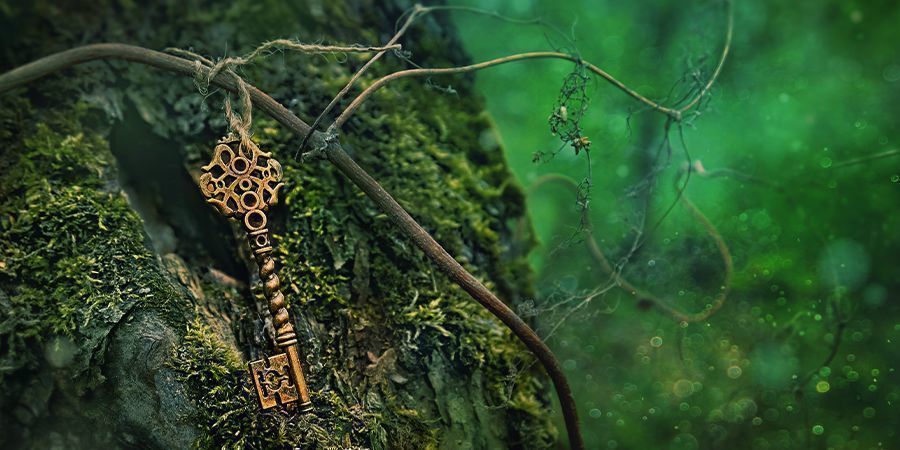
What You Should Know Before Growing Cannabis
Growing marijuana is not as hard as it seems. However, there are certain things that all growers should know. Being mindful of these 5 things can help you to navigate the growing process with more success and less frustration. Most importantly, once you have done your research, don't be afraid to start growing and making mistakes!
Growing marijuana seems like a complex and risky venture. However, once you get used to it, you will quickly realise that it is actually much easier than it seems. Being mindful of certain things can help to ease and facilitate your growing experience. Having the right equipment, choosing the right strain, and using the right growing techniques are just some of the most basic considerations.
Growers should take the time to develop a thorough plan that can be adjusted as problems occur. However, many people spend too much time focusing on research and preparation before starting to grow. As it happens, many growing issues will pop up anyways and can be fixed on the go. So check out our list of the top 5 things growers need to know, and then get to work!
1. YOUR CHOICE OF STRAIN HAS A BIG IMPACT ON YOUR GROW

There are thousands of cannabis strains to choose from, and picking the right one can be crucial to the success of your grow. There are many factors to consider when deciding which strain you should grow.
Your experience level as a grower should be a primary consideration when deciding on a strain. Some strains are much more beginner-friendly than others. These strains will typically finish faster, be more tolerant of heat and moisture fluctuations, and are more pest-resistant. Beginning growers would do well to choose a forgiving and resilient strain for their first growing experience.
You will also have to consider whether you plan on growing indoors or outdoors. Most strains grow just fine both inside and out. However, some strains thrive in the great outdoors, whereas others may be too fragile to be grown outside, or may require artificial conditions to flourish.
Growers are also advised to choose carefully between growing indicas or sativas. Not only will this dictate the effects produced by the plant when consumed, but it will also affect the size and shape of the plant. Indicas tend to grow smaller and bushier, while sativas can grow tall and wild. Hybrids can be unique and unpredictable, depending on their genetics. Indoor growers should make sure that their plants are appropriately sized for their grow room.
When buying cannabis seeds online, make sure to purchase high-quality seeds whenever possible. Doing so can save you money, time, and frustration throughout the growing process. Healthy seeds should be brown, grey, or black, and should have a nice waxy coating that can reflect light. It is best to avoid underdeveloped seeds that are white or green, as well as those that are cracked, broken, or dented. For more information, check out our post on how you can test your seeds for quality.
2. GROWING CANNABIS DOESN’T HAVE TO BE HARD

Growing cannabis is easier than it seems. There are indeed many complex factors to consider when growing cannabis, but the best way to learn is to just start. Don’t let yourself get bogged down by analysis paralysis. No amount of research can fully prepare you for the experience of growing. As long as you have the proper equipment, a thorough understanding of what you have to do, and a detailed plan for your grow, you may as well just start. Growing marijuana is easy, you’ll be fine!
There are plenty of benefits to growing your own weed, and the quicker you start, the sooner you can enjoy them. Growing your own weed will help you to save money on cannabis and give you greater control over your access to marijuana. Growing cannabis is fun, so don’t hesitate to get started. If you need a little inspiration, check out our top 10 reasons for growing marijuana.
Rest assured that, should you need help throughout the growing process, the internet can provide you with a wealth of information. Again, problems will eventually occur, so be sure to observe and document them carefully. As long as you know what you’re looking for, you are sure to find the answer on the internet.
3. PROBLEMS OCCUR!

When you do eventually run into problems, you should try to fix them as soon as possible. Oftentimes, many problems are the result of grower error. Novices are bound to make mistakes, but thankfully, plants are often forgiving, and experience is the best teacher.
Some of the most common growing mistakes involve imbalances in the growing environment. Having pH imbalances in the soil, or giving your plant the wrong amount of water, can quickly lead to problems. Watering issues can be swiftly corrected. Using the proper resources, it shouldn’t take long to figure out if your plant is being overwatered or underwatered. When it comes to pH problems, most of them can be solved by flushing your plant with water. Afterward, growers must figure out the cause of the imbalance and rectify it. The most common causes of pH imbalances are over-fertilisation and improper nutrient ratios.
Applying improper nutrient ratios can lead to issues like nutrient burn or nutrient lockout. In order to avoid these states, it is important to only give your plant the nutrients it needs. Growers may think they are helping their plant by feeding it nutritional additives, but too many can be harmful.
Plants can also be damaged by natural threats such as pests and pathogens throughout the vegetative and flowering phases. Attention to cleanliness and a well quarantined grow room should be enough to protect your plants from pests. However, this is not always the case. The most common pest to threaten marijuana plants is the spider mite. These tiny critters should be removed immediately, otherwise, they could lead to the complete decimation of your crop. Mould and fungi can be prevented by ensuring that your grow room has proper airflow and an appropriate humidity level. Be sure to monitor airflow and humidity so as to avoid fluctuations, or even more serious problems.
Lastly, growers should be mindful or environmental stressors like heat, wind, and light. Heat stress can burn the edges of your plant’s leaves, but can be easily fixed by lowering the temperature in your grow room. Exposing them to too much light can similarly damage the leaves of your plants. Light burn can be caused by either high light intensity or high heat levels. Adjusting these two factors should fix the problem. Furthermore, carefully positioning fans and ventilators far enough away from plants can help to avoid wind damage.
For more information on diagnosing and fixing growing problems, check out our growing problem-solving guide.
4. MORE NUTRIENTS DOESN’T MEAN MORE BUDS

Marijuana plants require nutrients to thrive, just like any other plant. However, properly and effectively administering nutrients can be tricky since requirements may differ from strain to strain. Nutrient ratios may also differ depending on the stage of growth that the plant is in.
Research and planning will be necessary in order to ensure that your plants get the nutrients they need, when they need them. Administering the wrong nutrient ratios will quickly damage your plants, and hamper their ability to produce maximum yield. Growers should also remember to flush their plants with water before harvesting. This will help to avoid nutrient buildup affecting the colour and flavour of the final buds.
While nutrients may play an important role in helping your cannabis plants thrive, they are far from the only way to increase the yield and quality of your final harvest. A variety of plant training techniques can be utilised to enhance your grow. Techniques like low-stress training (LST), fimming (FIM), supercropping, and topping can all work to increase your plant’s production by improving its exposure to light, and focusing its energy on bud production.
More comprehensive growing techniques like the sea of green (SOG) and the screen of green (ScrOG) can be used to train all the plants in your grow at the same time. These techniques can help growers reach the optimal point between quantity and quality. The real cost of these types of techniques is in time and effort. However, if you are willing to put in the work, you can find yourself harvesting a forest of green, instead of just a few plants.
Having and correctly using the right equipment can go a long way toward achieving huge ass buds of quality. Growers must make sure that their lighting and airflow systems are appropriate for their grow. Many worry that they may not have enough light or ventilation, however, oftentimes the problem is having too much. Thermometers and humidity readers play a crucial part in growing healthy plants. Constantly monitoring these meters will help you to avoid fluctuations, or damage resulting from heat stress or mould.
5. REMEMBER TO BE DISCREET

It is a good idea to be as discreet as possible about the fact that you are growing marijuana. Growing weed can be fun and exciting, but you may want to resist the urge to tell others about it. In places where growing marijuana is illegal, doing so could result in severe legal consequences. As such, it is best to be cautious and sensible when it comes to your grow.
Even if you are legally allowed to grow cannabis, you may want to be prudent about it. Thieves and nosy neighbours can still pose a threat to your plants. Moreover, some apartments and condominiums may restrict the growing of cannabis under their tenant regulations. Violations of these regulations could lead to steep penalties like fines or evictions. Being mindful of smell and visibility can help to protect both your plants and your privacy.
There are several ways to hide the smell of an indoor grow. The most common method of filtering grow odour is to use a carbon filter. This kind of filter conveniently attaches to your grow room’s ventilation in order to capture all the organic smells passing through it. Other odour solutions include negative ion generators that neutralise smell using electrical charges, and HEPA filters that trap air molecules. For more ideas on how to manage your grow’s odours, check out our article on controlling odour.
Lastly, if you are growing outside, make sure to shield your plants from the view of passersby and potential thieves. Growing your plants among bushes or along a treeline can help to provide natural cover. Using man-made barriers such as fences or tarp can also work well to obscure plants. Always remember: if your plants are visible to strangers, they are at risk.
-
 6 min
February 18, 2021
The 10 Easiest To Grow Cannabis Strains For Beginners
If you’re still new to growing cannabis, choosing the right strain can make all the difference. Certain varieties are just easier to grow, making them better suited for novices. These strains often...
6 min
February 18, 2021
The 10 Easiest To Grow Cannabis Strains For Beginners
If you’re still new to growing cannabis, choosing the right strain can make all the difference. Certain varieties are just easier to grow, making them better suited for novices. These strains often...
-
 6 min
June 6, 2018
How To Grow Your First Cannabis Plant In 10 Steps
For some, cannabis cultivation is a hobby. Many growers want to become marijuana self-sufficient. Others aim to turn pro. Regardless, it all begins with a seed. In this step-by-step guide, we offer...
6 min
June 6, 2018
How To Grow Your First Cannabis Plant In 10 Steps
For some, cannabis cultivation is a hobby. Many growers want to become marijuana self-sufficient. Others aim to turn pro. Regardless, it all begins with a seed. In this step-by-step guide, we offer...
-
 4 min
October 16, 2017
How To Grow Huge Ass Buds: 10 Steps To Success
Cannabis cultivators of all levels have one thing in common. We are all looking for a fat stash of our favourite marijuana. If you want to grow enormous cannabis colas, you need to take 5 minutes...
4 min
October 16, 2017
How To Grow Huge Ass Buds: 10 Steps To Success
Cannabis cultivators of all levels have one thing in common. We are all looking for a fat stash of our favourite marijuana. If you want to grow enormous cannabis colas, you need to take 5 minutes...





 United States
United States










